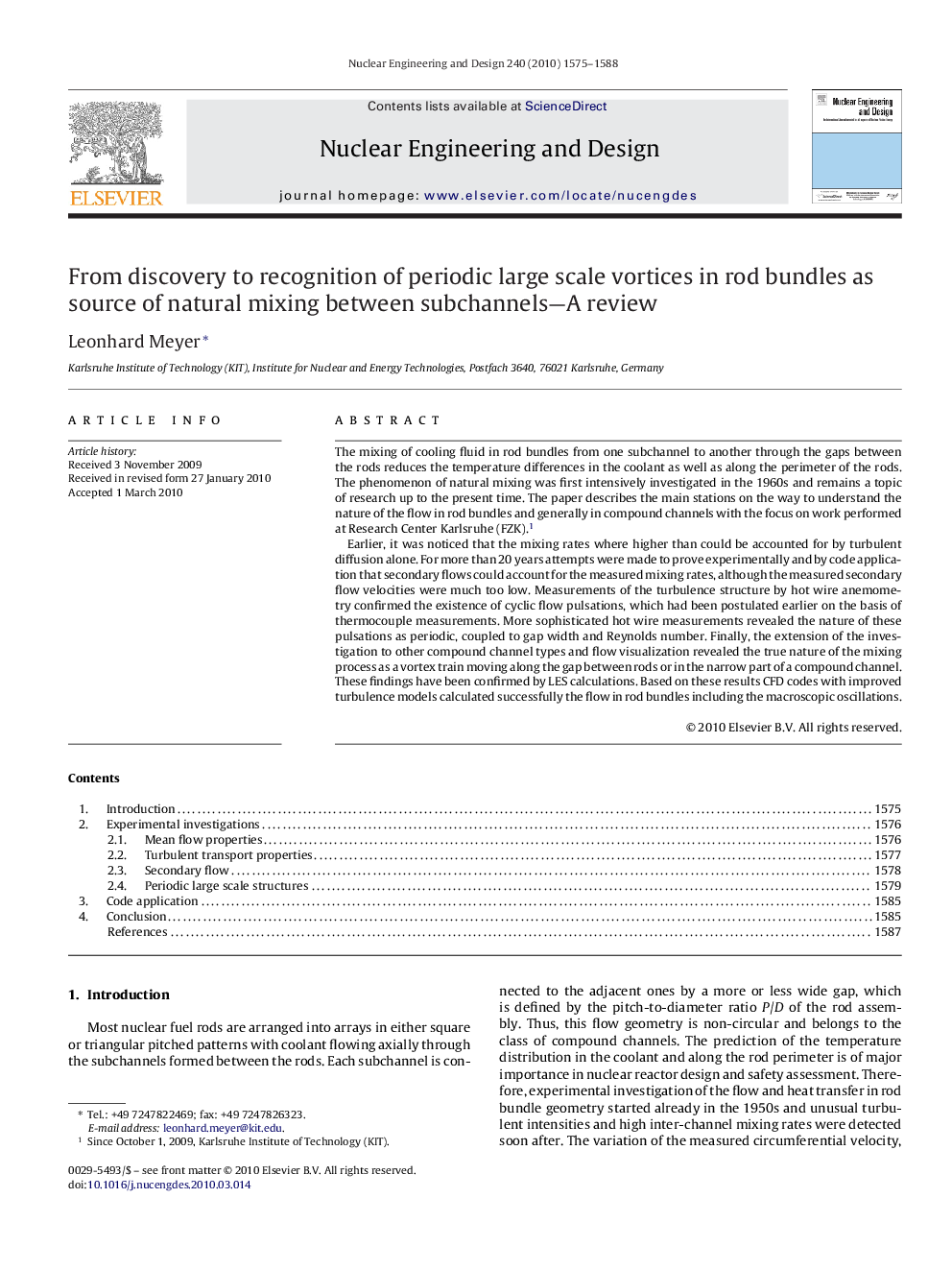| Article ID | Journal | Published Year | Pages | File Type |
|---|---|---|---|---|
| 298291 | Nuclear Engineering and Design | 2010 | 14 Pages |
The mixing of cooling fluid in rod bundles from one subchannel to another through the gaps between the rods reduces the temperature differences in the coolant as well as along the perimeter of the rods. The phenomenon of natural mixing was first intensively investigated in the 1960s and remains a topic of research up to the present time. The paper describes the main stations on the way to understand the nature of the flow in rod bundles and generally in compound channels with the focus on work performed at Research Center Karlsruhe (FZK).1Earlier, it was noticed that the mixing rates where higher than could be accounted for by turbulent diffusion alone. For more than 20 years attempts were made to prove experimentally and by code application that secondary flows could account for the measured mixing rates, although the measured secondary flow velocities were much too low. Measurements of the turbulence structure by hot wire anemometry confirmed the existence of cyclic flow pulsations, which had been postulated earlier on the basis of thermocouple measurements. More sophisticated hot wire measurements revealed the nature of these pulsations as periodic, coupled to gap width and Reynolds number. Finally, the extension of the investigation to other compound channel types and flow visualization revealed the true nature of the mixing process as a vortex train moving along the gap between rods or in the narrow part of a compound channel. These findings have been confirmed by LES calculations. Based on these results CFD codes with improved turbulence models calculated successfully the flow in rod bundles including the macroscopic oscillations.
